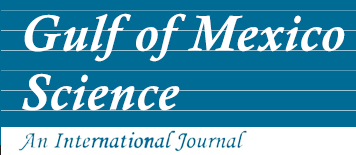Alternate Title
A Multi-Year Survey of Meiofaunal Abundance From the Northern Gulf of Mexico Continental Shelf and Slope
Abstract
This 3-yr (2007–09) survey documented meiofauna abundance across the northern Gulf of Mexico on the continental shelf and slope from south Texas to south Florida. Sediment samples were collected from depths ranging from 29 to 509 m (average = 132 m) on the National Oceanic and Atmospheric Administration ship Gordon Gunter during the annual fall small pelagics fish-sampling cruise. A total of 259 sediment samples from 99 Shipek® grabs were analyzed. Meiofauna were isolated from the sediment by sieving (63-μm sieve) and concentrating the organisms via Ludox® centrifugation. Each year the two dominant animal groups were nematodes and copepods, followed by polychaetes, nauplii, kinorhynchs, priapulid loricate larvae, tardigrades, and Acari. Spearman correlations indicated that abundances of nematodes, copepods, polychaetes, and nauplii were positively related, and that all meiofauna groups decreased in abundance with increasing longitude (farther west). Abiotic variables such as salinity, temperature, and depth did not correlate with any meiofauna group. Distribution maps of the animals indicated a clear geographic trend that was supported statistically, in that the animal groups were more concentrated in Florida samples rather than the central and western continental shelf.
Recommended Citation
Landers, S. C., F. A. Romano III, P. M. Stewart and S. Ramroop.
2012.
A Multi-Year Survey of Meiofaunal Abundance From the Northern Gulf of Mexico Continental Shelf and Slope.
Gulf of Mexico Science
30
(1).
Retrieved from https://aquila.usm.edu/goms/vol30/iss1/4

